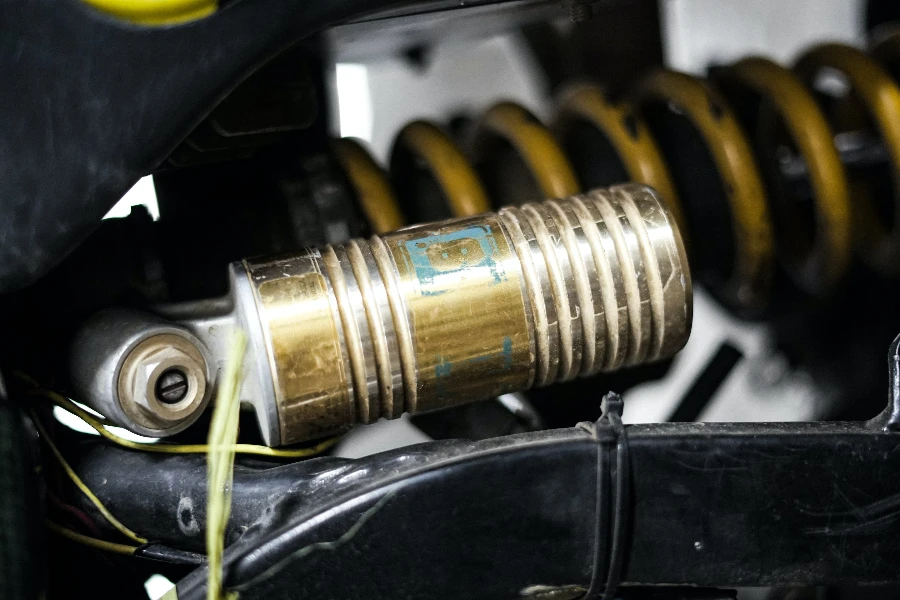The suspension system is a crucial component of any vehicle, enhancing the quality and stability of a car’s motion. By providing better handling and safety, the suspension system also contributes to the performance of other automotive systems, such as the wheels, brakes, axles, and tires, among other components. These components are intrinsically linked to the robustness of the suspension system.
Therefore, regularly checking and maintaining the suspension system helps ensure optimal driving performance and the overall longevity of the vehicle. This article provides a comprehensive guide on how to maintain and repair a vehicle’s suspension system.
Vehicle Suspension System and Its Components
A vehicle suspension system is an assembly of mechanical linkages that are built around the vehicle’s frame to create a cushioning effect from the road surface below. These components include shock absorbers, struts, coil springs, tires, and leaf springs. They work together to provide stability and damping technology that prevents the risk of a rough or bouncy ride in a vehicle.
The suspension system plays a crucial role in ensuring steering stability, improving handling, and balancing the friction between the road and the vehicle’s tires.
Here is a brief explanation of each of the key components of a vehicle’s suspension system:
1. Shock absorbers
Shock absorbers are a mechanical component of the suspension system placed within the links of a car’s frame. They are long, tube-shaped devices that help control unwanted motion in vehicles. They work by improving controlled compression and rebound, which occurs when a car encounters a pothole or bump in the road. Shock absorbers are vital for maintaining firm tire grip and contact with the road.
2. Struts
Struts are the weight-bearing supports of the vehicle, of which the spring and shock absorber are its two main components. The strut has dual functionality, handling bumps during movement like the shock absorber and providing the structural integrity of the suspension system. Struts offer drivers a better driving experience, allowing them to balance speed better with highly controlled driving.
3. Coil springs
Coil springs are helical-shaped elastic devices that are used to store energy, which is then released to absorb impacts and balance the forces between contacting surfaces. Coil springs are normally found on the side of the car’s chassis, near the shock absorbers. They help to carry the weight of the car, minimize the disturbance of the car’s impact, and balance out unwanted impacts that arise during movement.
4. Leaf springs
Leaf springs are formed by a series of curved-impression metal plates bonded together, each of the same width but varying in length. They are used to reduce vertical vibration and are primarily found in vehicles with solid rear axles.
5. Tires
Tires are the only part of a car’s suspension that makes direct contact with the ground. Tires transfer the car’s load to the ground and experience the most impact when the car encounters bumps or depressions. Tires are designed to provide traction for acceleration, balance, and proper weight distribution.
How to Check a Car’s Suspension System
Over time, vehicles may start to show signs of wear, such as instability or vibrations when in motion, or pulling in one particular direction. To correct these irregularities, take the vehicle to a professional tune-up or perform a basic suspension inspection by following the tips below.
1. Check the Tire Tread
The tire tread is an important part of the vehicle’s drivetrain and works together with the brake system to determine the alignment of the wheels. Inspect each of the tires, specifically checking for uneven wear, bald spots, or sidewall damage. When a portion of the tire’s tread is worn down, it poses a danger to you and other road users and should be repaired immediately.
2. Check the Wheel Alignment
Wheel alignment inspections are often overlooked and, among some less informed drivers, considered an entirely unnecessary expense. However, inspecting a vehicle’s wheel alignment is very useful, addresses tire wear issues, protects the entire suspension system, and improves the car’s handling. Therefore, periodic wheel realignment should not be overlooked. On average, a used vehicle should have its wheels realigned every 30,000 miles.
3. Try Slam on the Brakes When in Motion
Slam on the brakes is another effective way to check the condition of a car’s suspension system. This procedure is best implemented in a safe environment. Drive a short distance and, at intervals, come to an abrupt stop while observing if the front end of the car dips significantly or shows other obvious problems. If a car has a faulty front strut or shock absorber, it will have difficulty maintaining balance or steering during sudden braking.
How to Maintain a Vehicle’s Suspension System
Maintaining a vehicle’s suspension system is easy once you master a few key steps. Read on to learn how to effectively care for a suspension system, which in turn will help prolong the overall life of a vehicle on the road.
Suspension System Inspection Process
1. Check Tire Pressure
Tires should remain inflated to the recommended PSI level to achieve maximum performance. The PSI level is typically displayed on a sticker on the driver’s side door jamb. Inspect each tire with a reliable tire gauge and inflate under-inflated tires to the specified PSI level. If a tire is overinflated, allow it to cool down and then bleed air out of the tire to match the proper PSI level.
2. Inspect Shock Absorbers
Faulty shock absorbers are a disaster waiting to happen and therefore should be inspected regularly for any compromise in the vehicle’s ability to dampen bumps. Any irregularities should be corrected immediately to prevent potential accidents. Hydraulic fluid or gas leaks are common problems found with shock absorbers and can affect piston movement when left untreated, leading to further reduction in impact absorption.
3. Check Tread Depth
Tires with the correct tread depth are a boon to the suspension system, as they help prevent damage or failure to the suspension system. A healthy tire should have a tread depth of no more than 2/32 inches. It is important to perform a thorough inspection of tire wear. In case of uneven wear, get a proper wheel alignment done to correct the drivetrain system.
4. Inspect Ball Joints
Ball joints should also be inspected for signs of wear and tear, which often only require lubrication with oil to function better. Since ball joints should always remain lubricated, it is recommended to lubricate them every time you change the car’s oil.
5. Realign Wheels After Every 20-30k Miles
Wheel alignment is necessary to improve the functionality of a car’s suspension and prevent accidents. It is best to realign the wheels after every 20-30k miles to prevent tire wear and keep the car running reliably and safely.
Determining Whether Suspension Parts Need Replacing
To identify faulty components in the automotive suspension system that may need replacement, conduct a thorough inspection of the system and address any unusual signs.
The following signs may indicate that something is wrong with the suspension system and that a component needs to be replaced:
- The car bounces or sways excessively when driving over bumps or uneven roads.
- The car pulls to one side when braking or accelerating.
- The car rides unusually high or low.
- The tires show signs of uneven wear.
- There are fluid leaks from the shocks or struts.
In order to find out which aspect of the suspension system is not working properly, you may need to do a comprehensive inspection of each component.
Conclusion
Maintaining a vehicle’s suspension system is crucial for extending the life of a vehicle’s drivetrain and improving handling and control while driving. Car owners should pay close attention to the warning signs mentioned in this article and take appropriate action when necessary.
If you are looking for replacement parts for vehicle suspension systems, visit Alibaba.com for a wide range of in-demand products, including shock absorbers, ball joints, tires, or springs.

